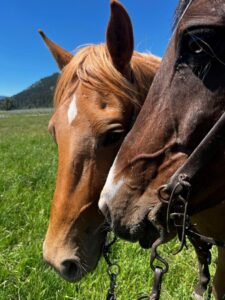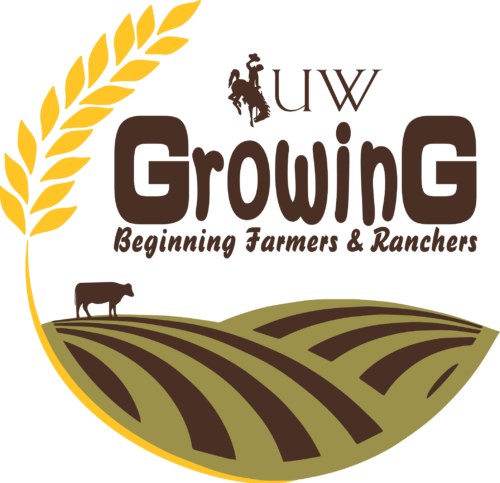New Corrals and Doctoring Cattle
#bfrdpwy #aginternship #RightRisk
During my third week at the ranch, I continued to expand my knowledge regarding both animal health and ranch maintenance. This week’s weather was quite a bit nicer than last week as there was no snow and it was sunny nearly every day. It is also an exciting time for the ranch as a multitude of large events are being planned, including a private rodeo! With all of the other events taking place at the ranch as well, including raft rides, hot air balloon rides, weddings, corporate events, and tours, there seems to be a constant buzz of excitement and a mixture of combined personalities and interests.

Throughout the week I completed a large amount of manual labor in preparation for the ranch rodeo coming up and also for general maintenance of the ranch. Aside from our general tasks of fixing fences and completing basic chores, another intern and I were responsible for tearing down an old fixture, and we actually had some fun doing it. Plus, the newly “renovated” area looked much more appealing after we had cleared the old structure. I also spent one day of this week running errands and doing office work. The office work included reviewing contracts for the dog sledding tours that take place on the ranch during the winter season. It was interesting to see how both the ranch and the dog sledding company work together to make the dog sledding tours possible.
One concept from this week that really stood out to me occurred on one of the days we were doctoring cattle. A majority of the time, as we doctor cattle, we look for a few common illnesses/injuries that mainly include pink eye, bloat, hoof rot, infection, and/or visibly injured body parts. While I am still learning exactly what to keep an eye out for as we doctor cattle, I am now able to point out some of these common issues. Prior to this week I had been looking for bloat in the general abdomen area. Although, I learned that bloat actually occurs more distinctly in the rumen area which is the left side of the steer’s abdominal area. Therefore, to diagnose bloat, I was told to look at the left side compared to the right and determine if it is larger than the right side and/or bloats as higher, or higher than, the steer’s back.

Another concept that is important to note also occurred as we were doctoring cattle. The cattle that are bloated are given medicine both intravenously and orally. I was curious as to why this was the case or if the antibiotics acted in different ways depending on the location of administration. My boss informed me that the oral route of giving the medicine was not common practice, nor was it taught as a treatment. Though, he continued to tell me that administering the antibiotic through the mouth as well, had always had successful results of ridding the cattle of the bloat. In this sense, experience proved to be a very useful tool.
After everything I learned this week, I definitely feel as though some of my questions from the previous weeks were answered. I still have plenty of questions as I learn more and more though. I am intrigued to learn more about specific tips that would not necessarily be taught through a textbook or class. For instance, getting experience with giving antibiotics orally is something that is not usually taught, but it is an effective treatment that could be extremely useful in my future practice. I am hoping that as the internship progresses even further I will continue to pick up specific details that can only come with experience.
On a similar note, I am curious to experience the process and overall timeline of the cattle’s time at the ranch. We are approaching the period of time in which they begin being marketed to be sold and I am intrigued to learn more about what that process looks like. A group of the largest steers have already been weighed and their future weights’ projected but I am also curious to experience how the focuses change throughout the ranch as the cattle are sold and where the attention is given when there are fewer cattle numbers.

I truly feel as though the knowledge I gained this week will be crucial in the future as it is something that only comes with experience. This was one of the reasons as to why I thought this internship would not only look good on vet school applications, but it also would hopefully teach me things that can only be obtained through repetition and experience. Being able to know the kinds of treatments that are actually useful outside of what is taught through a textbook is extremely valuable. I plan to use the oral antibiotic treatment in the future because it has been effective countless times.
In addition to this, I believe that as I continue to gain exposure to cattle and their common injuries/illnesses I will become much more familiar with the symptoms and corresponding diagnoses and treatments. Being aware of the kinds of behavior to look for and being able to pinpoint injured or ill cattle is a skill that will be important to use in the large animal veterinary field, and it will greatly improve efficiency. Overall, this week was full of valuable learning experience and useful tips and I am looking forward to more!
Submitted by: Sydney Thorvaldson
Edits by: GrowinG Internship Team

